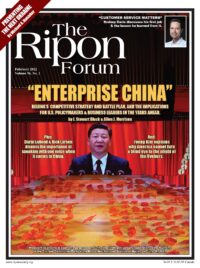
It is a widely held belief that “good communication is essential in a pandemic,” but as the Center for Disease Control and Prevention’s (CDC) recent recommendations on how long people infected with COVID should isolate from others demonstrated, that is easier said than done. Thus, as the COVID pandemic continues into its third year, public health recommendations seem more likely to trigger calls for “improved COVID messaging” and “better CDC communications” than adoption of the advice.
Having served as the CDC’s director of media relations for six years, including during the 2009-10 influenza pandemic, I know how difficult it is to communicate public health science, advice, and recommendations. I also know the communication demands and challenges are far greater in the COVID-19 pandemic thanks to a virus that is continually changing, far more news and social media outlets, and a society where people can easily express diverse and divergent views. And as if that weren’t challenging enough, recent surveys report significant declines in public trust in the CDC as well as a majority of American’s saying they feel “worn out” by how COVID has impacted their daily lives (Monmouth University Poll, December 2021).
If the CDC hopes to build trust, address frustrations, and improve acceptance of public health recommendations and advice, it needs to do much more.
CDC Director Rochelle Walensky has pledged to improving the agency’s COVID communications, including the clarity of its messages, and highlighting the continued likelihood of rapid and unpredictable changes in recommendations. Both are important steps, but if the CDC hopes to build trust, address frustrations, and improve acceptance of public health recommendations and advice, it needs to do much more. At the top of my list are:
• Make clear the major public health outcomes that the CDC is trying to achieve with its recommendations and actions. At this stage of the pandemic, it is unclear what the end goals are with respect to COVID. For instance, are the recommendations and actions intended to prevent all or most COVID infections? Or are they mostly about reducing and preventing severe COVID illness, especially hospitalizations and deaths? The former is much more difficult to achieve and seemingly not well aligned with what current vaccines are designed to do (i.e., prevent severe illness, hospitalizations, and deaths). The latter is more attainable but would require acknowledging that it currently is not possible to prevent most infections and mild illness. It is hard to communicate well when people do not know what you are trying to achieve.
• Be careful with the word “science” and how you use it. Yes, understanding the virus, developing vaccines and treatments, and developing public health recommendations use and involve science (e.g., rigorously designed studies). Public health recommendations and actions, however, involve much more than science; they also require judgements regarding whether and how to use findings from a scientific study. It is also the case that often decisions and recommendations have had to be made in the absence of science. Thus, messaging should avoid extolling “We need to follow the science” or “Our policies are based on science” because it has rarely been that simple with COVID and most people know that.
Effective or successful “communication” encompasses more than what you say and how you say it. It involves listening, learning, and understanding those you are seeking to inform.
• Announcements and messages need to be clear and well-stated, but keep in mind, doing so does not mean criticism and disagreement won’t arise. Often, it is the public health recommendation or policy, and not the wording and messaging, that is the actual source of criticism. Communicating their presence does not ensure high or universal agreement or compliance with a public health recommendation. People, including experts and especially politicians, will disagree with the interpretation, value, and meaning of the data used as the basis for a recommendation as well as whether action is needed or worthwhile. Differing perspectives, values, beliefs, and demographic characteristics matter.
• Effective or successful “communication” encompasses more than what you say and how you say it. It involves listening, learning, and understanding those you are seeking to inform, educate, influence, or motivate. It involves engaging with diverse individuals and groups, including those who have different views, to better understand their needs, concerns, values, and priorities. This is often difficult, and not always successful, but as we transition from a COVID pandemic to COVID being endemic (i.e., a part of our lives), it is the only way to identify public health recommendations that will achieve the greatest and broadest acceptance.
Glen Nowak is a professor in the College of Journalism and Mass Communication at the University of Georgia and co-director of the College’s Center for Health and Risk Communication. He spent 14 years at CDC, including six years as the agency’s director of media relations and 6 years as director of communications for its National Immunization Program.




